Bells
Roman Tower
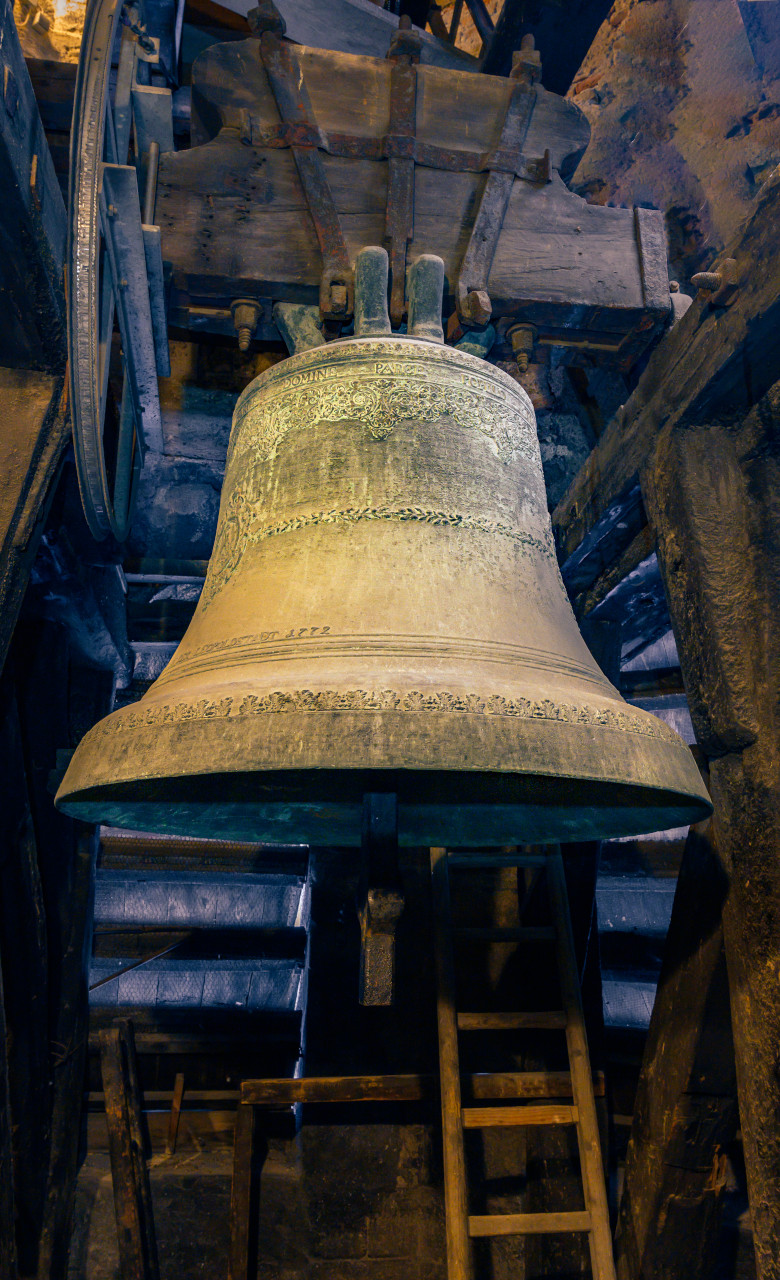
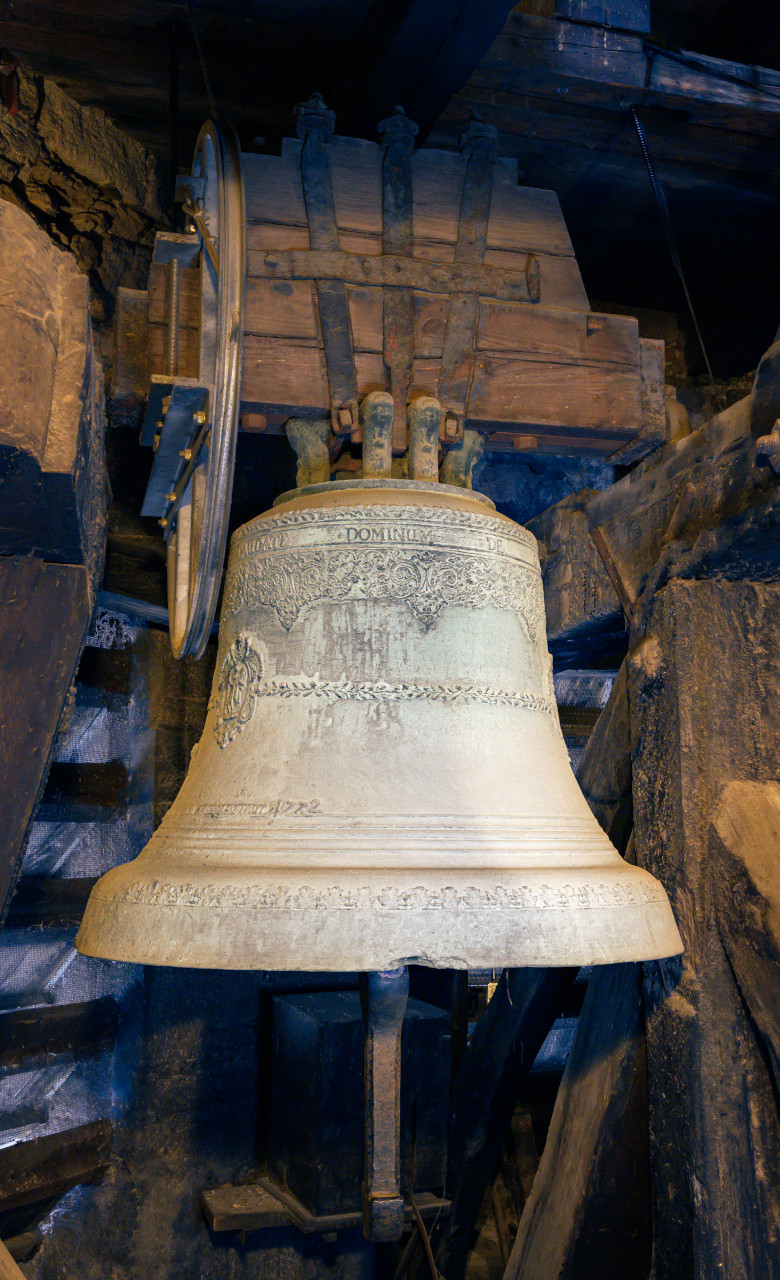
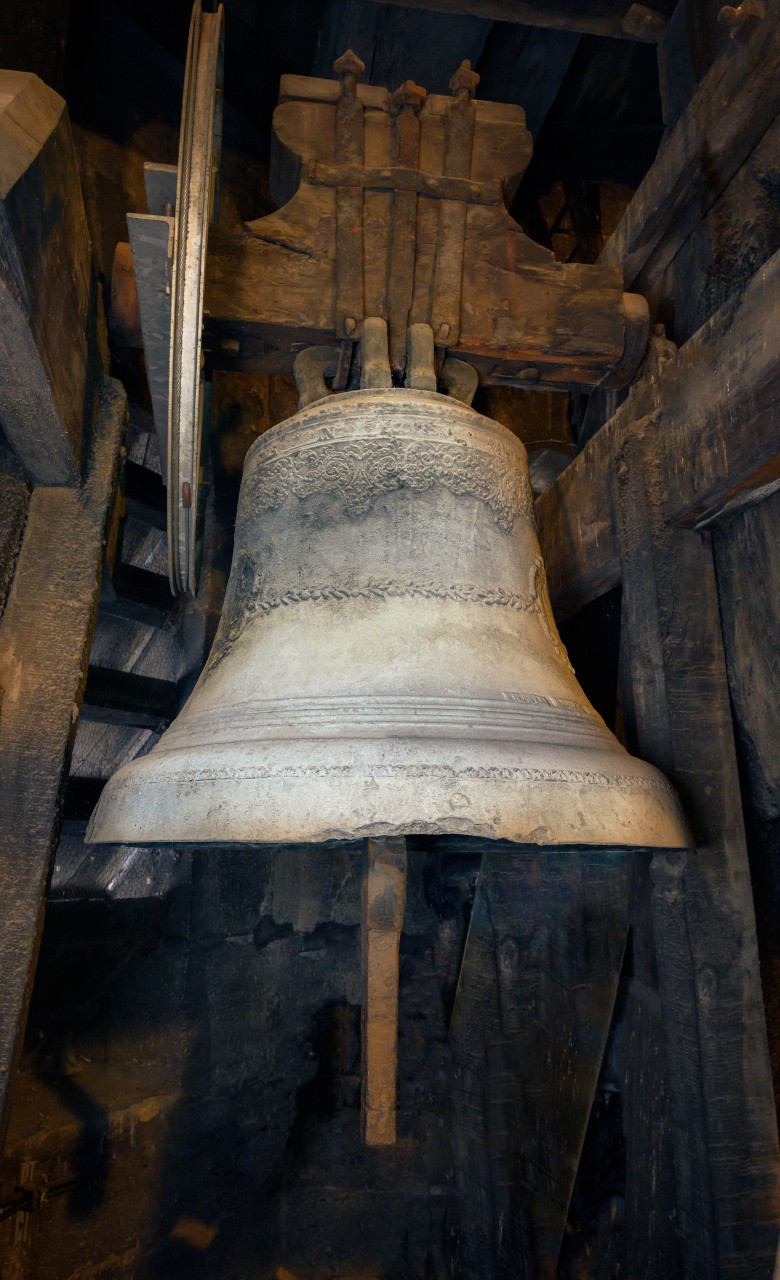

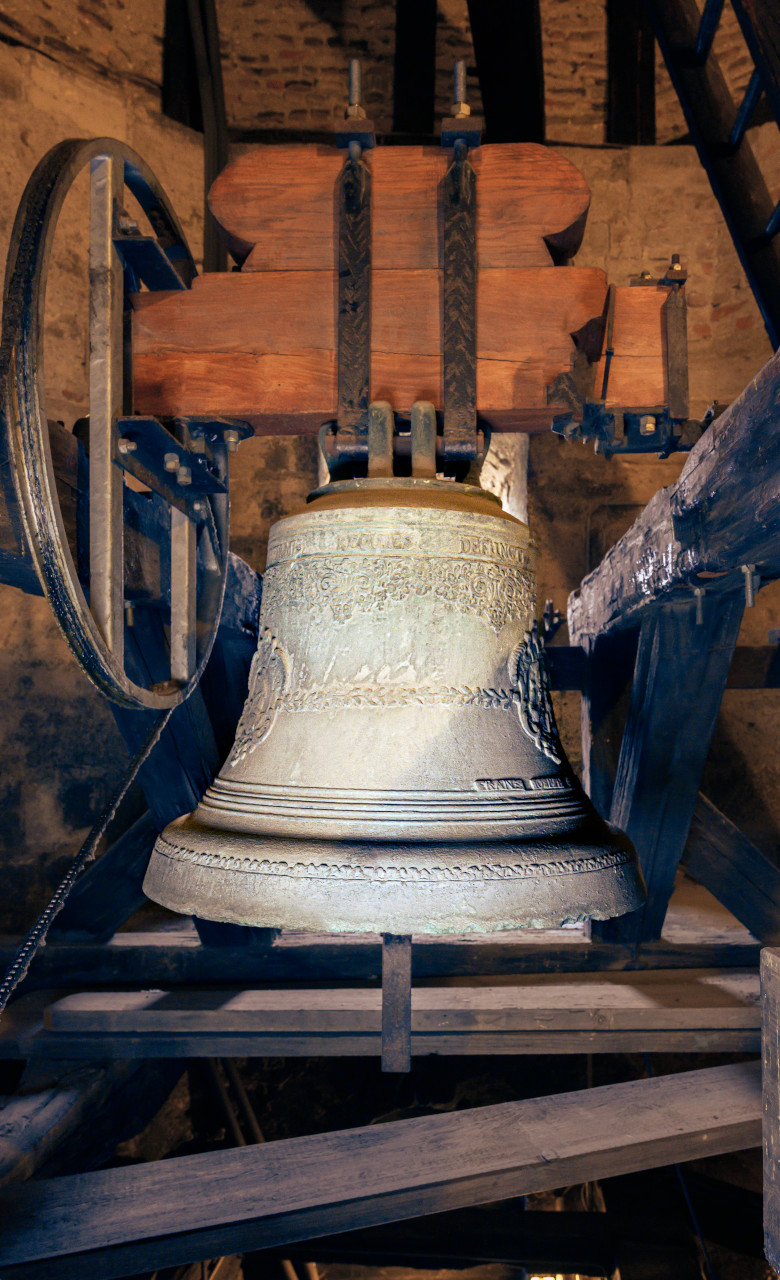
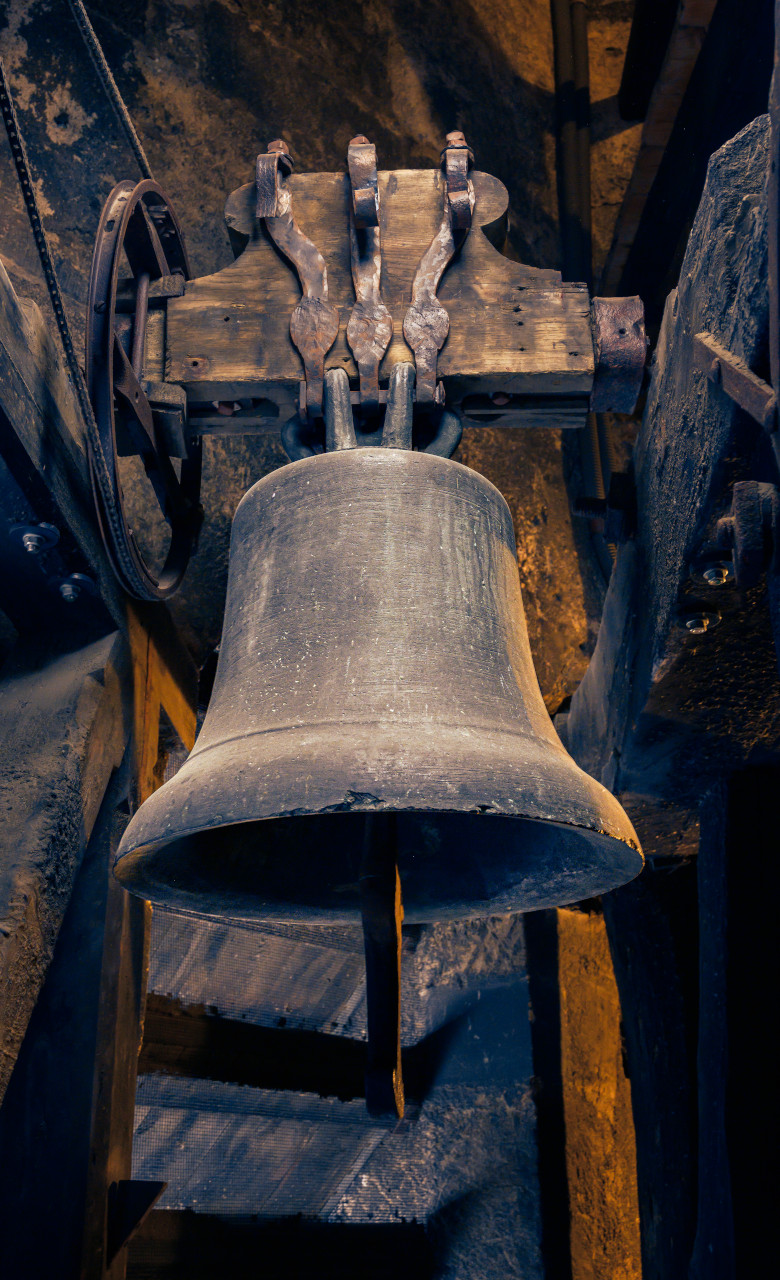

The six historic bells in the northern Roman Tower
Six of the historic bells at St. Stephen’s Cathedral hang in a huge wooden belfry, parts of which date back to the Middle Ages. Both belfry and bells survived the cathedral fire because this part did not catch fire. The bells are rung individually after evening prayer from Thursday to Sunday and alltogether on Saturdays and Sundays before vespers at 5 p.m. These bells are of great historic and musical value.
Videos
1. ‘Kantnerin’
2. ‘Fehringerin’
3. ‘Bieringerin’
4. ‘Zügenglocke’
5. ‘Churpötsch’
6. ‘Chorglöckl’
7. ‘Feuerin’
Destroyed historic bells in the southern Roman Tower
The ‘Viertel Pummerin’ and the ‘Zwölferin’ were placed here. These bells were destroyed in the fire of 1945. Today there are no bells in this tower anymore.
One historic bell is currently not in use
The bell is placed as show pieces below the belfry of the ‘Pummerin’.
‘Speisglocke’

